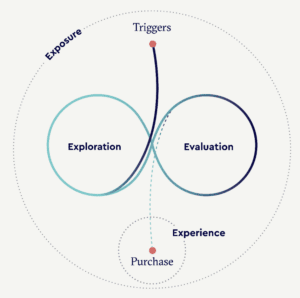
Developing audience personas for your SEO strategy

How does developing audience personas work for your SEO strategy? Your target audience defines the essence of your organic search strategy, even the keyword research. It can even help untangle the “messy middle” with a greater understanding of your buyer’s journey.
Your audience is the core factor in how successful your online search visibility is, the people whom your SEO strategy is geared towards, and the people you exist for. Without an audience, there is no product or service to sell.
The keywords you want to rank for are those that your intended audience is likely to type into the search engines. So really, audience personas are ideal for gathering accurate research.
What is an audience persona?

An audience persona is an imaginary person that your product or service is aimed towards. They’re essentially your ideal, typical customer to a T. They encompass everything about the individual who you want to purchase your product.
You may have just one or multiple personas depending on what product or service you’re offering. The thing with audience personas is the detail. The detail helps you envision and action your plan exactly in alignment with this persona. The content you create is centred around them, so it will likely resonate and increase their engagement with what you have on offer.
An audience persona brings no negatives, only benefits. They help you both personalise and visualise.
How developing audience personas helps your SEO strategy
How an audience persona can help out your SEO strategy is not something to ignore. Here are some of the key ways in which it can give you that helping hand:
User-focused content
Having a persona and target customer(s) in mind helps gear your content in a specific direction where the buyer journey is at the centre of consideration. You want to create content that addresses your buyer’s interests and questions create content that they’ll want to read!
Analysing your audience data helps you optimise your content by knowing what will keep your audience on your site. This in turn helps your SEO strategy by decreasing bounce rates and improving user experience (which Google rewards).
Keyword Research
Your keyword-researching process is made much more efficient when having a target audience. Generating seed keywords can be helped by thinking of those all-important motivations of your typical customer.
For example, if you want to target users who are looking for something cheap, you’d ideally aim to rank for words like ‘cheap’ or ‘cheapest’. Or, if you’re using local SEO to target local customers, you’d aim to rank for words like ‘near me’ ‘local’ or the specific location such as ‘in Manchester’.
Untangles the ‘messy middle’

There’s a reason it’s called the ‘messy’ middle, and that’s because of the complex deliberations a user makes before clicking the ‘buy’ button. Gearing your SEO plan towards an audience persona makes it more likely that the buying process will be much more linear and less ‘messy’.
Customers are either won or lost at this point in the journey, so optimising your website around a target customer allows the likelihood of cementing a user’s trust and winning them over.
Drives conversions
Following on from untangling the ‘messy middle’, this results in an increase in conversions and profit. A user is more likely to perform a desired action (whether that be a purchase or click of a link) when the site is built for them and their intentions.
Think about it, you want your product to be found by the people you want to buy it. So if you use an audience persona to drive SEO decisions, then it’s more likely that these people are going to find it and purchase it.
How to create an audience persona
So, now you know why an audience persona is important, but how do you create one? Here are four tips to help get you going with the creation process:
Research
Research, research, research- it’s the be-all and end-all of any creation process, whether it be strategy creation or content creation. Gathering and analysing customer data helps form the building blocks of who this persona is. The data could even tell you whether your actual audience and target audience are different- if this is the case, you know your SEO tactics must be re-optimised to gain the target audience.
Have a look at the type of people your site or social media channels are reaching (age, location, gender, etc.,). You could even conduct interviews and surveys to truly grasp the essence of who these people are.
Create background info
Based on the research gathered you can form the background information that creates these people. What is their demographic? Their age, gender, ethnicity, family size, relationship etc, However, only include the information that directly impacts your product or service offered.
Identify their needs and motivations
Identifying your audience’s needs and motivations helps you know what it is they’re after and why, and then how your business can satisfy those needs. Get in the head of your customer so you can predict their next move and get a sense of their thought process. Your audience can be reached on a more personal level by determining these factors.
Refine and put to the test
Finally, it’s time to put everything together. Refine who this person is based on data and patterns, and then you have the freedom to put them to the test. A good practice is creating hypothetical scenarios in which someone may need your product or service. How would you serve their needs in this scenario?
Still have questions? Get in touch
Our SEO experts are equipped to answer any questions you may have. If you’re interested in how we can help your SEO strategy, feel free to get in touch today.
